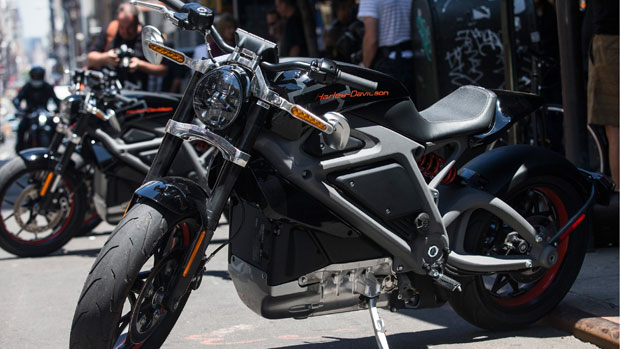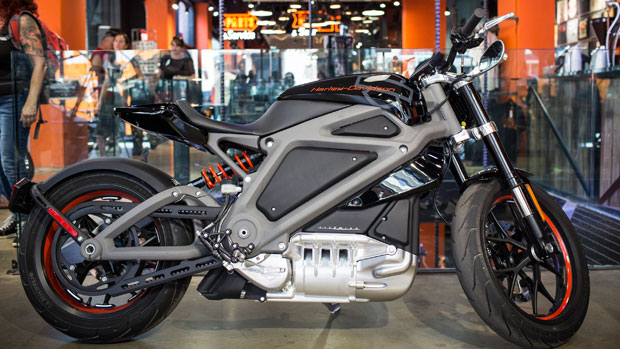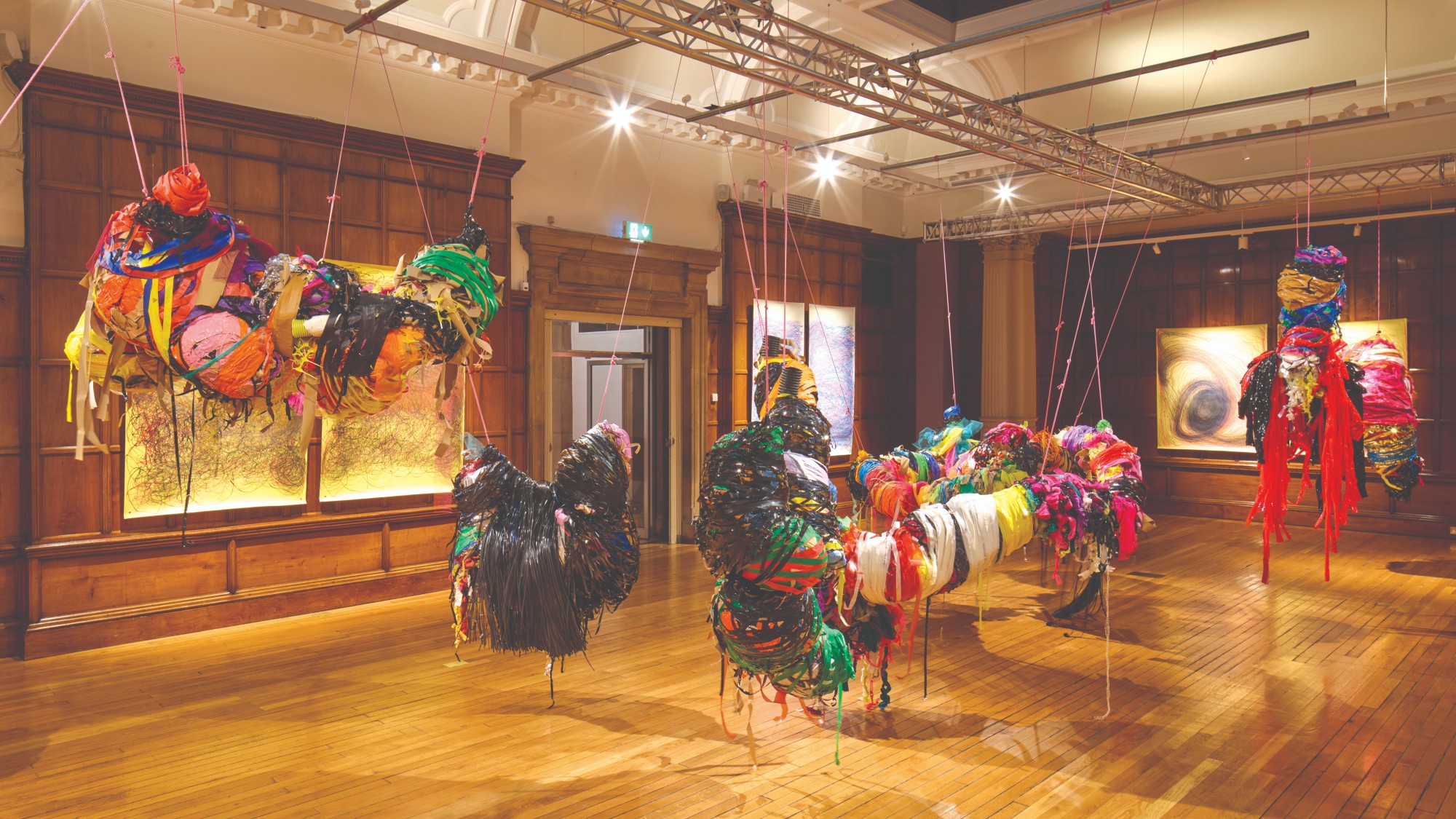Electric badass: is US ready for Harley's new green machine?
They say it sounds like a fighter jet taking off from a carrier: sounds more like a nylon zipper to me

NEW YORK - Harley-Davidson have just unveiled an electric motorcycle called Project Livewire. Did the foundations of skyscrapers shake to the sound of rolling thunder? Did anxious fathers rush to lock up their daughters? Did the cops hurry to their newly acquired armoured cars?
No, no and no, they did not.
Harleys are about two things: noise as a delusion of power, and a bad-ass image as a delusion of testosterone.
The Week
Escape your echo chamber. Get the facts behind the news, plus analysis from multiple perspectives.

Sign up for The Week's Free Newsletters
From our morning news briefing to a weekly Good News Newsletter, get the best of The Week delivered directly to your inbox.
From our morning news briefing to a weekly Good News Newsletter, get the best of The Week delivered directly to your inbox.
A large, aggressive-looking electric motorcycle is a good idea. It could be a two-wheeled version of the Tesla car, proof that electric vehicles can go beyond milk carts and Chinese take-away delivery men. Green is good.
But a Harley?
The company claims to have engineered a brand new sound in motorcycling: “Think fighter jet on an aircraft carrier.” The aircraft carrier is the ultimate in the projection of military might. Wow.
You can hear it on the company website. It sounds to me more like a cheap nylon zipper on a pair of trousers.
A free daily email with the biggest news stories of the day – and the best features from TheWeek.com
Whatever happened to Hell’s Angels and Easy Riders? To the anthem of Born to be Wild and the vision of hair streaming behind as the lone rider rumbles through the iconic landscape of the American West?
The answer to that might be that they have been co-opted by the marketing department.
Harley-Davidson nearly went bust in the 1980s, dissolving into a puddle of dirty oil on the garage floor as their antiquated, slow and astonishingly unreliable machines could no longer compete with Japanese rivals in any rational way at all.
In a stroke of genius, the company came back to life with a carefully crafted one-two strategy. First, they totally redesigned an engine which belonged in a 1930s tractor to function in a more-or-less modern manner, while still looking like the mighty machine between Peter Fonda’s legs in Easy Rider.
Then they instigated a “lifestyle” retail empire in which smart, glass-walled look-alike franchises sell a myriad “customised” styles built around the basic chassis – how bad you wanna be? – alongside racks and racks of leather jackets, cowpoke chaps, Marlon Brando caps, jewellery, and even dog bowls inscribed with the legend 'Bad to the Bone'.
It worked. The new Harleys came out just in time to capture a tidal wave of retiring blue-collar Baby Boomers who, particularly in the boom days of the 90s and 00s, could afford to splash out $20,000-plus to relive their adolescent dreams of the 1960s.
Harley sells six out of ten motorcycles bought by anyone over the age of 35, and an even bigger percentage to the over-50s. There are hundreds of thousands of them.
You should see them on Sunday afternoons in summer: 300lb men with moustaches and bandanas straddling 700lb machines with 200lb wives in alarmingly filled tank-tops perched on the back, pottering along in phalanxes at 30 miles an hour, teetering around corners, trailing waves of raucus exhaust notes and off-the-peg Rugged Individualism.
Will they go for the sound of nylon trouser zippers?
My old friend Richard Brand, a quintessential New Yorker who survived a hardscrabble childhood in the Bronx to build himself a fortune in the old-fashioned way, has just bought himself an enormous black-on-black Harley on which to amuse himself while at his holiday home in Florida.
Why, I wanted to know, had he done that when he could have bought himself a proper motorcycle?
He admits that just riding it home from the dealership was an agony of strained wrists, numbed buttocks and ringing ears. His wife dutifully went for a ride and compared the experience to being kicked in the butt by a mule. He promises to find a better seat.
I still don't get it…
“The whole point is the noise and the look of it,” he explains. “It’s the badass. You should see the looks on the faces of people as I ride by! It’s about how it makes you feel when you ride it.”

Indeed. After all, Lawrence of Arabia named his celebrated Brough Superior, now in the Imperial War Museum, 'Boanerges' after the Persian god of thunder.
I rode a few Harleys, long ago, with the late Malcom Forbes, the eccentric magazine tycoon who ran his own bike gang, the Capitalist Tools. He owned 60 of the bikes, including one painted purple which was a gift to Elizabeth Taylor and which no one else was allowed to ride.
We plodded along the New Jersey highways in a column, trying to feel like Hell’s Angels when we reached the diner for lunch. The most exciting moment came when a bolt dropped out of the engine, followed by the oil, followed by a long skid and a couple of hours waiting for Forbes’s personal rescue truck.
I turned to Forbes magazine for a view of Project Livewire. Under the appropriate headline Hell Freezes Over, they wrote: “Of course the challenge in moving a well-established brand like Harley forward, as any Business 101 textbook will attest, is how to attract new customers without alienating its fiercely faithful base."
Matt Levatich, Harley’s president, is quoted as saying: "America at its best has always been about reinvention. Like America, Harley-Davidson has reinvented itself many times in our history, with customers leading us every step of the way.”
Harley-Davidson have wisely concluded that their “core” market will not live for ever, and claim that they are already selling more machines to “outreach” markets, a term they apply to anyone under 35, female, black or Hispanic. A new, green-conscious generation might just be ready for electric badass.
The signs are that the marketing department is as savvie as ever. The electric machine will not go into production for at least two years, and in the meantime they plan a journey of publicity and market research into the very heart of America motoring mythology.
The prototype machines are to be shipped from their New York debut to Route 66. For the rest of the summer they will travel the legendary route, a magnet to tens of thousands of cruising motorcyclists, offering rides and the chance to register an opinion.
Get your kicks on Route 66? We'll see.
-
 Turner Prize 2025: ‘artistic excellence’ or ‘cultural nonsense’?
Turner Prize 2025: ‘artistic excellence’ or ‘cultural nonsense’?Talking Point Work by the four artists nominated for this year’s award is on display at Bradford’s Cartwright Hall
-
 Man vs Baby: Rowan Atkinson stars in an accidental adoption comedy
Man vs Baby: Rowan Atkinson stars in an accidental adoption comedyTalking Point Sequel to Man vs Bee is ‘nauseatingly schmaltzy’
-
 Goodbye June: Kate Winslet’s directorial debut feels like a ‘John Lewis Christmas TV ad’
Goodbye June: Kate Winslet’s directorial debut feels like a ‘John Lewis Christmas TV ad’Talking Point Helen Mirren stars as the terminally ill English matriarch in this sentimental festive heartwarmer